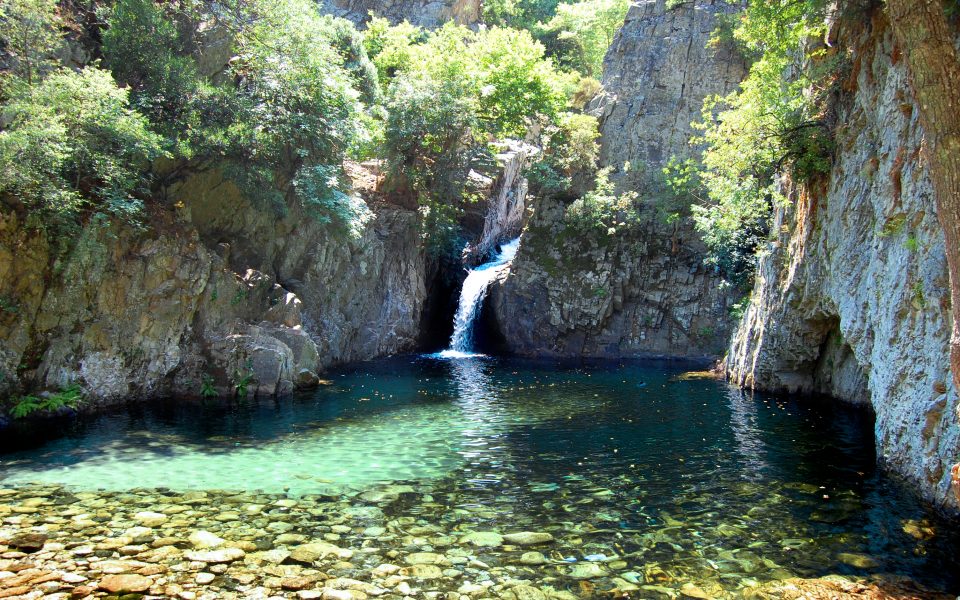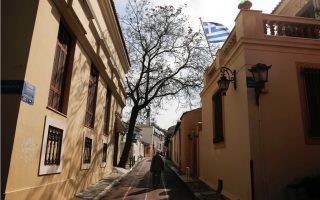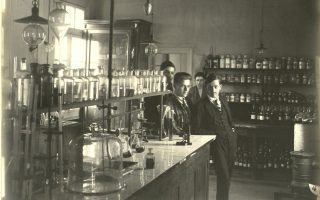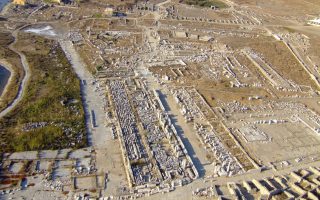The Paths of Culture network aims to put Samothrace on the map

One can safely assume that few of the Louvre visitors who stand marveling at the Winged Victory of Samothrace prominently displayed at the Paris museum are familiar with this celebrated marble statue’s place of origin. A largely overlooked island in the northeastern Aegean, close to the coasts of both Greece and Turkey, Samothrace (or Samothraki) whose official population of 2,840 shrinks considerably in the winter, is still just a place on the map for most Greeks, despite the island’s natural charms.
Over the past couple of years, the island’s local community has joined forces with the Greek Society for the Environment and Cultural Heritage and the Hellenic Cultural Center in Paris to shed light on Samothrace. “We are looking at ways to connect the Winged Victory of Samothrace with its homeland,” Thanasis Vitsas, the island’s mayor, told Kathimerini.
As part of the overall effort to establish Samothrace as a cultural and trekking destination, it was decided to include the island in the Paths of Culture network established by the Greek Society for the Environment and Cultural Heritage. A splendid initiative that is helping revive old traditional routes, with just mild interventions made to enhance paths, work has already been carried out on Patmos, on the Small Cyclades group of islands, at Marathon and in the Mainalo mountain range. Work was also set to start in Epidaurus in early July.
A crowdfunding campaign (http://kck.st/ 2sotEFa) titled “Samothrace: Walk with Me” was launched with the objective of raising 60,000 euros – the amount required to develop a network of eight paths on the island.
“We wanted to raise the amount through a crowdfunding campaign so to get as many locals involved as possible,” explained the fundraising effort’s leader, Carlota Maranon, a Samothrace-based Spaniard with an educational background in law, theater and journalism. “If we develop the paths together, we will look after them together,” she added in fluent Greek.
Hailing from Burgos in Spain’s north, Maranon first visited Samothrace as a student in the late 1990s while based in Komotini, northeastern Greece, in the Erasmus exchange program. In 2008, she decided to quit a marketing management job at a Madrid publisher and relocated to Samothrace, where her activities range from beekeeping to providing Spanish language lessons.
The revival plan for the island’s old traditional routes was designed by Yiannis Stefanidis, a forester and associate of the Greek Society for the Environment and Cultural Heritage. He first traveled to the island in September 2015 and made two further visits for a complete picture that would enable him to decide on the network’s eight paths. Stefanidis was given an extensive coast-to-coast guided tour that included everything from the magical beaches in the south to the waterfalls and highlands of Saos, an imposing area at an altitude of 1,611 meters.
“The scenery is amazing, especially for a forester,” Stefanidis enthused. “A very large number of trekking routes already exist and we wanted to choose a selection taking in the whole island,” he added.
Stefanidis consulted Dimitris Matsas, an archaeologist with 30 years of experience on the island, for routes certain paths would need to take as well as guidance on signposting, information to be provided, including route lengths and degree of difficulty, as well as clearing.
“With the routes in their present state, with virtually no signposting, people lose their way, which is extremely dangerous, especially when heading downhill next to streams,” Stefanidis stressed, adding that one trekker died during such an undertaking earlier this summer.
The study is currently undergoing revisions with assistance from the mainland Evros region’s forestry service as a result of stricter conditions set by a ministerial decision in January for both new and revived trekking routes. Though conditions have become more stringent, privately run environmental and mountain climbing associations are now permitted to take on such initiatives without municipal involvement.
The islanders have embraced the effort. “Initially, there was suspicion among the locals but they’re now telling me, ‘We did not expect such [constructive] work to take place,’” Stefanidis noted. “The mayor, too, is optimistic as he sees the campaign gaining momentum,” he added.
The overhaul of the island’s paths may well serve as a catalyst for further initiatives such as a need to restrict overgrazing, described by Vitsas, the Samothrace mayor, as a threat to the island, or an improved connection with the mainland. On the day Kathimerini spoke to the island’s mayor for this article, a ferryboat route linking Samothrace with coastal Lavrio, southeast of Athens, was sailing the route for the first time since 2007.





